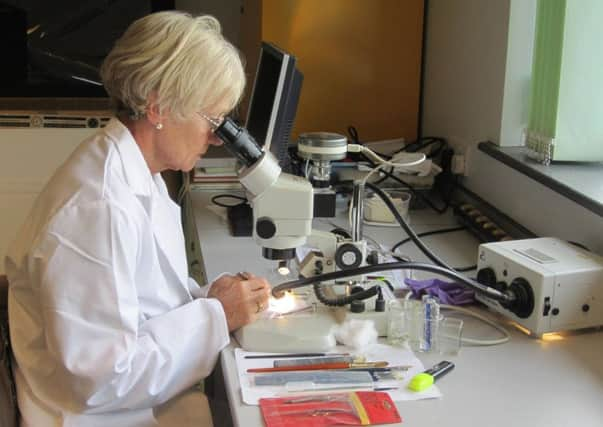Why would I destroy an irreplaceable artefact?


So why have I just willingly sent 100 pieces of 2000-year-old bone to Nottingham knowing that they will be destroyed and never again be seen by another researcher or museum visitor?
Why would a curator agree to destroy an irreplaceable artefact?
Advertisement
Hide AdAdvertisement
Hide AdEvery now and again I am approached by researchers who want to carry out a chemical analysis of a museum object that will destroy it.
Many techniques require bits of artefacts to be cut off and crushed before being dissolved, heated or bombarded with X-rays.
Some specialists need to grind artefacts into slices as thin as a human hair so that they can be mounted on microscope slides.
Of course this all causes damage to the artefact that can never be repaired.
Advertisement
Hide AdAdvertisement
Hide AdThe problem is that because the objects being analysed are destroyed, we will never be able to study them again.
So, we have to judge whether the new information that destructive sampling can bring is worth the risk of lost knowledge in the future.
It’s a hard call to make.
Science has told us a huge amount about ancient trade, technology, and health.
It can tell us what our ancestors ate and how far they travelled.
Advertisement
Hide AdAdvertisement
Hide AdDNA studies and carbon dating alone have provided enormous amounts of invaluable information.
However, all of this is the result of crushing or grinding up irreplaceable artefacts.
There are no right or wrong answers, but I believe that we keep our museum collections so that we can learn about the past, so we should not rule out destructive scientific analysis.
I am not suggesting that all requests to sample artefacts will be granted.
Advertisement
Hide AdAdvertisement
Hide AdWe consider around 20 factors before giving permission for this type of work, such as the significance of the object in question, the track record of the scientist, and the wider value of their research.
It is also vital to record as much about the artefact as possible before it is sampled.
In museums, new knowledge can come at a cost to the artefacts being studied.
Hopefully careful curation will always make sure that the price is worth paying.
Fishbourne Roman Palace, Roman Way, Fishbourne, Chichester